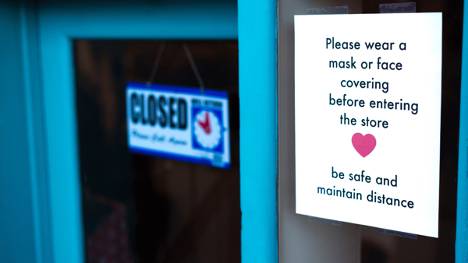Director of a home healthcare agency in New York, brings her extensive knowledge and expertise to the forefront as she delves into the topic of the updated mask mandates post-COVID-19.
With her Master’s in Public Health degree from New York University, Marsha Gay Reynolds offers valuable insights and perspectives on the implications of these changes for healthcare organizations and their stakeholders. Let us explore the evolving landscape of mask mandates and gain a deeper understanding of the decisions and considerations involved in shaping post-pandemic protocols.
The End of Mandatory Masking
After almost three years since the pandemic’s start, the era of mandatory masking in hospitals is finally closing. Instead of a blanket mandate, the decision to enforce mask-wearing will now be left to individual operators. This change impacts not only hospitals but also nursing homes and treatment centers. State officials have given these facilities the autonomy to establish their masking policies as they move forward.
New York City Health + Hospitals’ Continued Masking
While some healthcare facilities may opt to lift the mask mandates, New York City Health + Hospitals will continue to require mask-wearing. Maintaining this precautionary measure reflects the ongoing commitment to protecting patients, staff, and the community. The choice to keep masks in place demonstrates a proactive approach to ensure the continued safety of individuals within healthcare settings.
Implications for Healthcare Workers
The conclusion of the mask mandate is not the only recent change affecting healthcare workers. In February 2023, New York City’s vaccine mandate for workers ended. This shift in policy has allowed nearly 2,000 city employees who lost their jobs during the pandemic to reapply for their positions. As vaccination rates rise and new guidelines emerge, healthcare workers navigate a shifting landscape.
Considerations for Individual Facilities
With the newfound freedom to determine their mask policies, healthcare facilities face critical decisions. Crafting a strategy that aligns with the evolving public health landscape is paramount. Factors such as local infection rates, vaccination rates among staff and patients, and guidance from public health authorities will play a significant role in shaping these policies. Facilities must consider the well-being of both their employees and the patients they serve.
Expert Insights from Marsha Gay Reynolds
Marsha Gay Reynolds, drawing on her Master’s in Public Health degree from New York University, offers expert insights into the updated mask mandates. As a Managing Director of a home healthcare agency, she understands the challenges and considerations healthcare organizations face during this transition. Reynolds emphasizes the need for facilities to stay informed about the latest research, guidelines, and data to make informed decisions that prioritize the health and safety of everyone involved.
Looking Towards a Post-COVID Future
As the pandemic enters its next phase, the conclusion of mask mandates signifies a step toward normalcy. However, it is essential to remain vigilant and adaptable in the face of potential changes. Monitoring infection rates, vaccination progress, and emerging variants will remain crucial in shaping future policies. By staying informed and working together, healthcare facilities can navigate this transitional period and strive for a post-COVID future that prioritizes the well-being of all.


